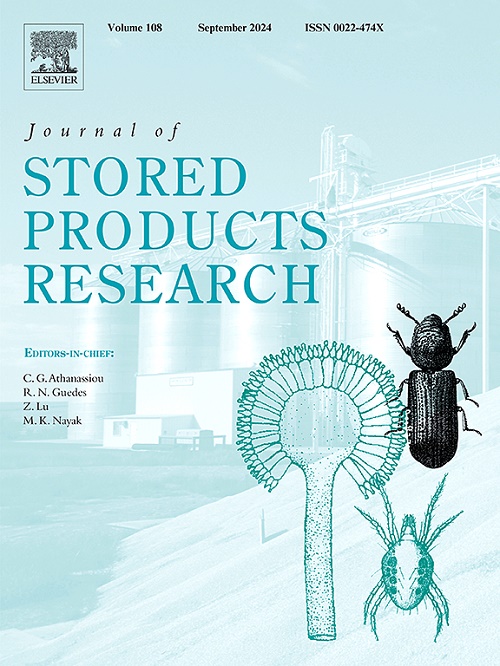The influences of X-rays irradiation on sensory attributes and physicochemical properties of shiitake mushrooms during storage
IF 2.7
2区 农林科学
Q1 ENTOMOLOGY
引用次数: 0
Abstract
Shiitake mushrooms (Lentinus edodes) are edible mushrooms with unique flavor and high nutritional value that are is highly perishable and prone to rapid quality deterioration post-harvest. This research evaluated the efficiency of X-rays irradiation to maintain the sensory attributes and physicochemical properties of shiitake mushrooms. Changes in postharvest quality were monitored in irradiated (0.5, 1.0, and 1.5 kGy) mushrooms stored for 35 days. Results indicated that X-rays irradiation effectively mitigated the deterioration in appearance, color and texture of shiitake mushrooms during storage. Electronic nose (E-nose) assay revealed that 0.5 kGy X-rays delayed the aroma fading of shiitake mushrooms while higher doses of X-rays treatment changed the odor profile. After X-rays treatment, the microorganism growth was inhibited, the electrolyte leakage and malondialdehyde (MDA) accumulation were alleviated, and the contents of soluble proteins, reducing sugars, ascorbic acid (AA), and total phenols (TP) were maintained. Notably, 0.5 kGy X-rays irradiation performed superior efficacy in maintaining sensory scores and tissue structure. The study suggests that 0.5 kGy X-rays irradiation can be used as shiitake mushrooms preservation method to retain the perceptual attributes and protect against spoilage.

求助全文
约1分钟内获得全文
求助全文
来源期刊
CiteScore
5.70
自引率
18.50%
发文量
112
审稿时长
45 days
期刊介绍:
The Journal of Stored Products Research provides an international medium for the publication of both reviews and original results from laboratory and field studies on the preservation and safety of stored products, notably food stocks, covering storage-related problems from the producer through the supply chain to the consumer. Stored products are characterised by having relatively low moisture content and include raw and semi-processed foods, animal feedstuffs, and a range of other durable items, including materials such as clothing or museum artefacts.

 求助内容:
求助内容: 应助结果提醒方式:
应助结果提醒方式:


